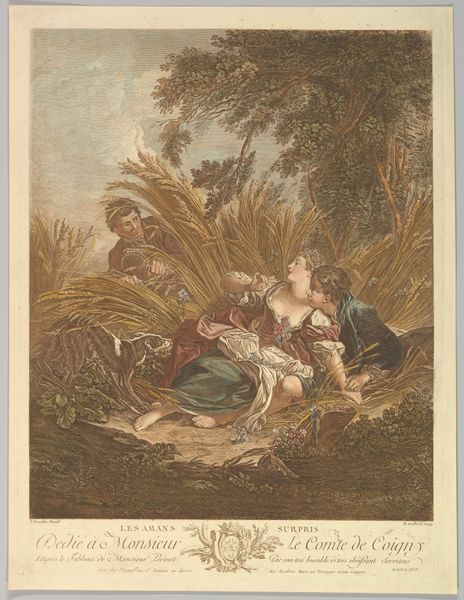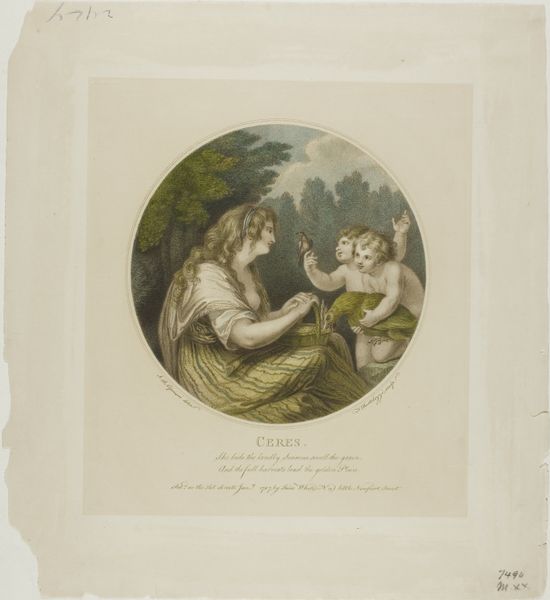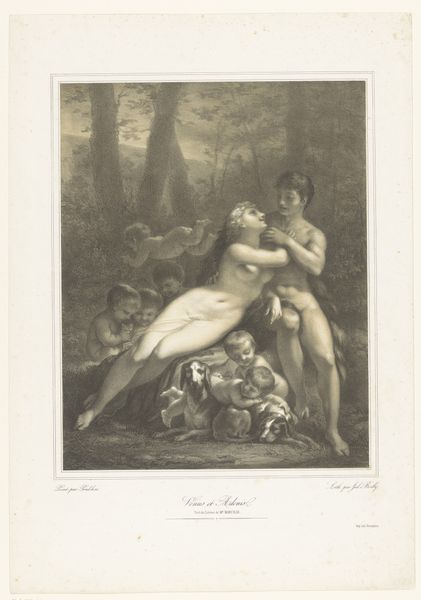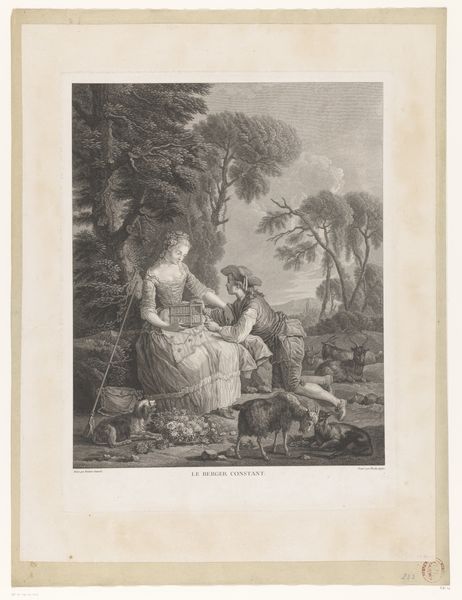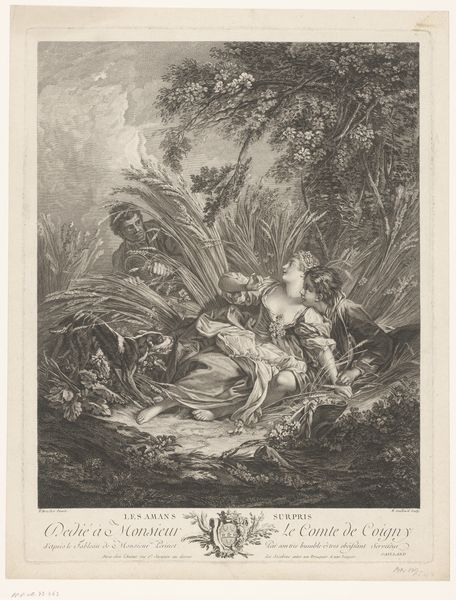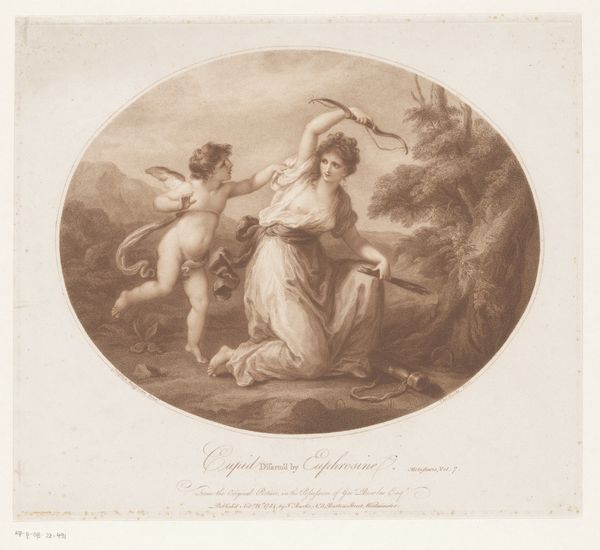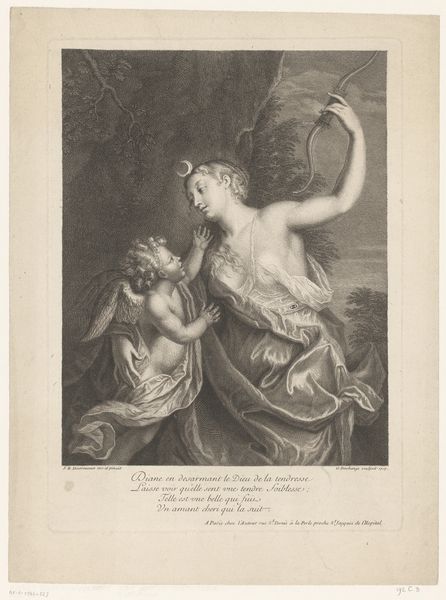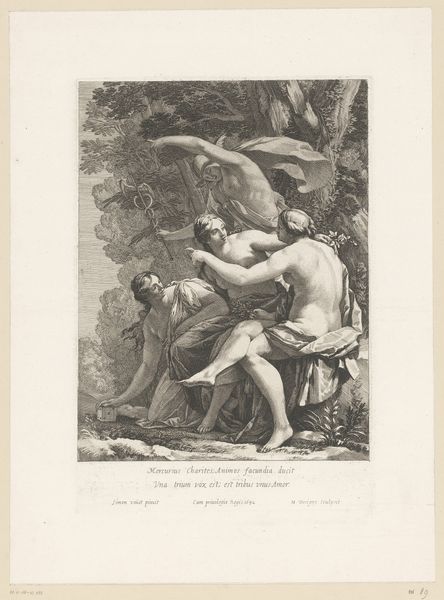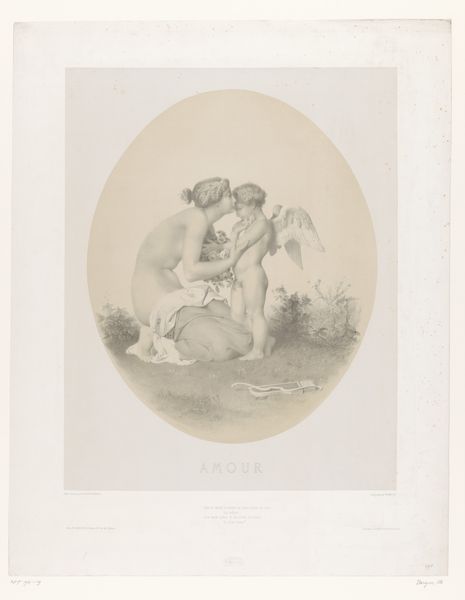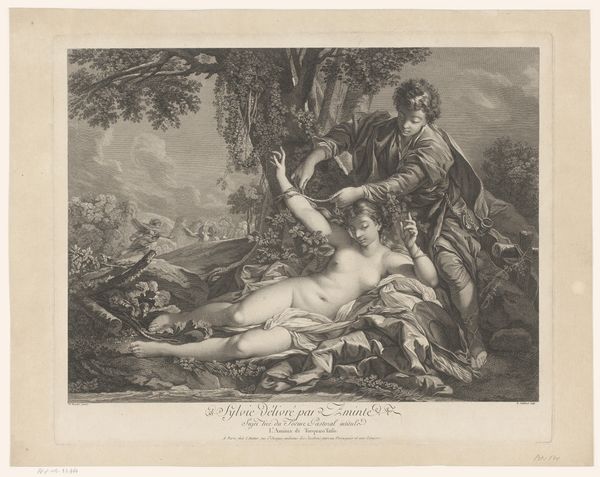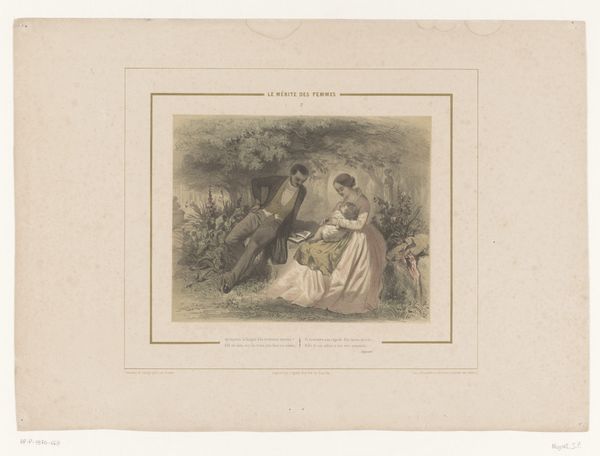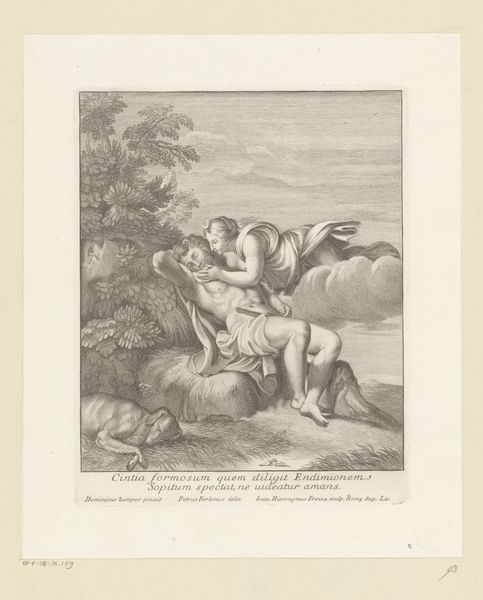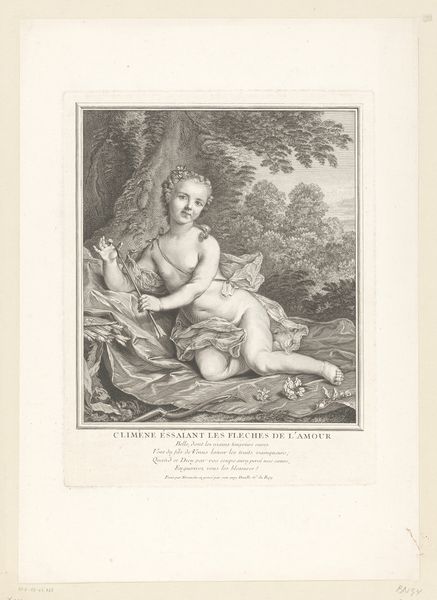
drawing, coloured-pencil, print, etching, watercolor
#
portrait
#
drawing
#
neoclacissism
#
coloured-pencil
#
allegory
# print
#
etching
#
figuration
#
watercolor
#
coloured pencil
#
genre-painting
#
history-painting
Dimensions: plate: 10 x 9 in. (25.4 x 22.9 cm) 11 3/16 x 10 1/8 in. (28.4 x 25.7 cm)
Copyright: Public Domain
This print, "Pomona," was made by Francesco Bartolozzi, an Italian printmaker active in 18th-century London. It’s made using a technique called stipple engraving, where tiny dots create the image, giving it a soft, almost chalky feel. It’s quite different from the crisp, clean lines of traditional engraving. Bartolozzi was a master of this technique, and it allowed for a more painterly effect, perfectly suited to the popular Neoclassical style of the time. Look closely, and you'll notice how the stippling creates a sense of volume and light, especially in the figures' skin and drapery. This wasn’t just about aesthetics; it was about bringing a new kind of reproductive print to the market, one that could mimic the subtlety of drawings and paintings. The image idealizes the harvest and the bounty of nature, but also speaks to the growing commercialization of art. Prints like these were relatively affordable, bringing art into middle-class homes, and fueling the market. It's a great example of how technique, style, and economic forces come together in a single work.
Comments
No comments
Be the first to comment and join the conversation on the ultimate creative platform.
